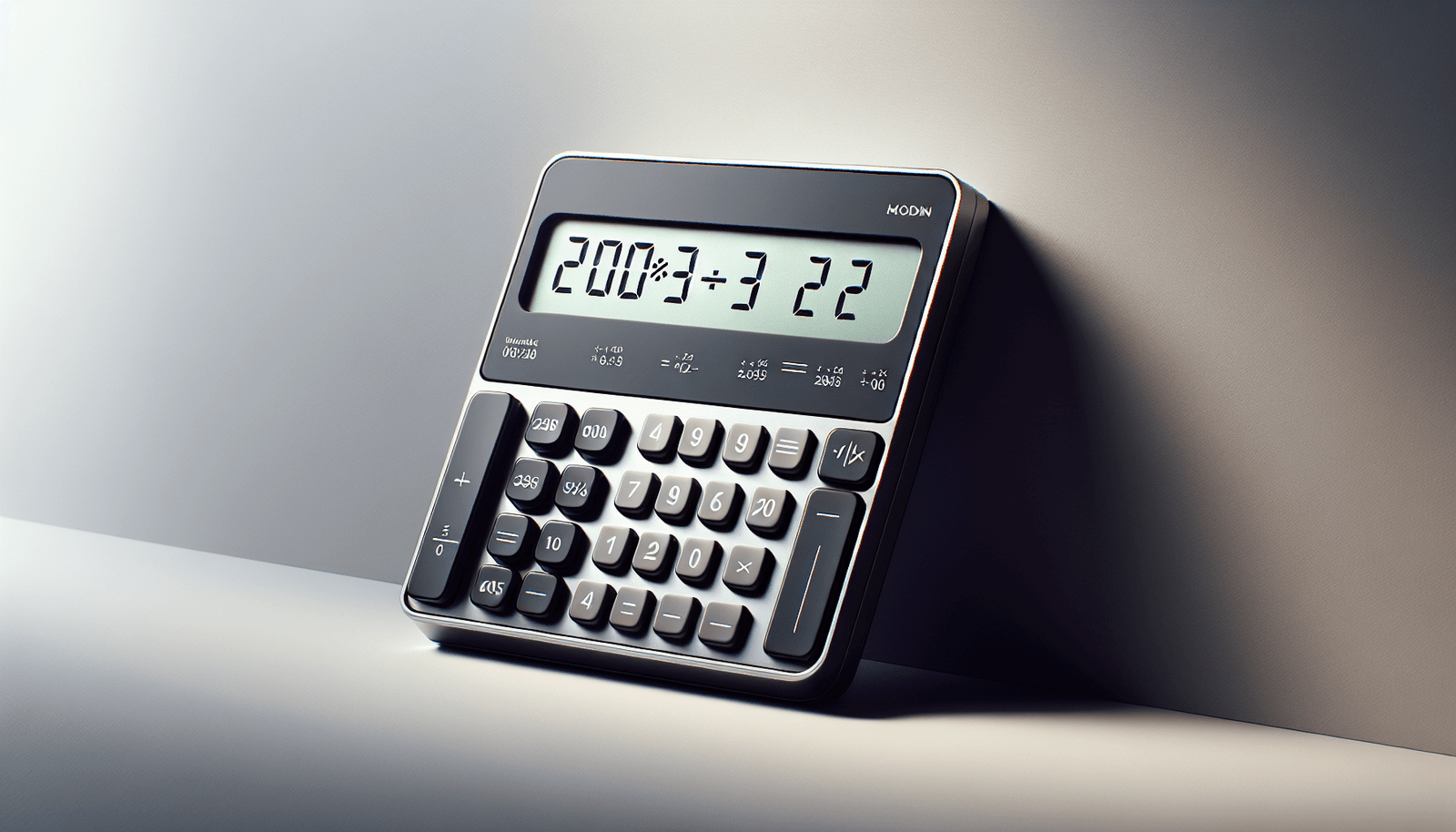Have you ever wondered how to determine the remainder when you divide one number by another? Understanding how to find remainders is essential in many aspects of mathematics and practical applications. This is where a modulo calculator comes into play. Let’s take a deep dive into how a modulo calculator works, its foundational concepts, and its applications in the real world.
 Modulo Calculator
Modulo Calculator
Modulo Calculator Overview: Finding Remainders
A modulo calculator is a tool designed to find the remainder that results when one number is divided by another. This process is known as modulo operation, often represented as % or mod.
What Can a Modulo Calculator Handle?
A modulo calculator can handle:
- Rational Numbers: Numbers that can be expressed as a fraction.
- Irrational Numbers: Numbers that cannot be expressed as fractions, like π or √2.
- Positive Numbers: Any number greater than zero.
- Negative Numbers: Any number less than zero.
You can calculate these manually or use an online tool for quick results.
Basic Modulo Calculation
The formula used in modulo calculations is straightforward:
[ \text = (\text \times \text) + \text ]
Example: 20 Modulo 3
Consider the expression 20 % 3. According to the formula:
- Let’s find the Quotient first: 20 divided by 3 is 6 with a remainder.
- Multiplying the Quotient by the Divisor: ( 6 \times 3 = 18 )
- Subtract this product from the Dividend: ( 20 – 18 = 2 )
So, 20 % 3 equals 2.
Real-World Examples
Understanding modulo through real-world examples can make the concept much more relatable. Here are two practical scenarios:
Candy Distribution
Imagine you have a bag of candies and you need to divide them among a group of children. Sometimes, you may end up with leftover candies. To find out how many candies will remain, you can use modulo.
Tile Calculation
When tiling bathrooms, you might want to know how many tiles will be left after covering a certain number of bathrooms.
Example
Say you have 62 tiles and need to use 14 tiles per bathroom: [ 62 \div 14 = 4 \text{ R } 6 ]
Thus, ( 62 % 14 = 6 ), leaving you with 6 tiles after tiling the bathrooms.
Manual Calculation Example
For better clarity, let’s break down a manual calculation in detail.
Tiling Case Study
You have 62 tiles and want to cover bathrooms using 14 tiles each.
Steps:
- Divide 62 (Dividend) by 14 (Divisor). This results in a quotient of 4.
- Multiply the quotient by the divisor: ( 4 \times 14 = 56 )
- Subtract this from the dividend: ( 62 – 56 = 6 )
The remainder is 6, so ( 62 % 14 = 6 ).
Applications
Modulo is not limited to theoretical calculations; it finds utility in many everyday tasks and professional fields.
Clock Arithmetic
Modulo is particularly useful in cyclic calculations, like time. For example: [ 251 , \text % 24 = 11 ]
This means 251 hours from now, it will be 11 o’clock.
Even/Odd Numbers
You can determine if a number is even or odd using modulo:
- ( x % 2 = 0 ) (Even number)
- ( x % 2 = 1 ) (Odd number)
Unit Conversion
When dealing with measurement units, modulo is helpful. For instance, converting a larger number of minutes into hours and minutes: [ 135 , \text % 60 = 15 ]
So, 135 minutes is 2 hours and 15 minutes.
Leap Year Calculation
Leap years can be determined using modulo operations.
Rules:
- If a year is divisible by 4, it’s a leap year (e.g., ( 2020 % 4 = 0 ))
- However, if it’s divisible by 100 (and not 400), it’s not a leap year (e.g., ( 1900 % 100 = 0 ), but ( 1900 % 400 \neq 0 )).
Programming and Modulo
In programming, modulo is frequently used for various tasks:
Common Uses
- Checking Even/Odd:
if (x % 2 == 0) { ... } - Cyclic Tasks: Performing tasks every Nth occurrence.
- Rotation Through Options: Rotating through a list of items.
Example Python Script
Here’s a simple Python script for determining if a year is a leap year:
def is_leap_year(year): if year % 4 == 0: if year % 100 == 0: if year % 400 == 0: return True else: return False else: return True else: return False
Example Usage
year = 2024 print(f” is a leap year: “)
Advanced Uses
Modulo also steps into more complex fields like random number generation and cryptography.
Random Number Generators
Modulo helps in random number generators to ensure the numbers fall within a specific range.
Cryptography
In cryptography, modulo operations are pivotal in creating keys that secure data.
Conclusion
Modulo is a powerful tool for finding remainders in various practical and theoretical contexts. From dividing candies among kids to tiling bathrooms, from programming algorithms to enhancing cryptographic security, the utility of modulo is extensive. While manual calculations are informative, online tools can simplify even the most complex modulo operations.
For those interested in related tools, consider exploring Basic Calculators, Scientific Calculators, and Integer Calculators to meet all your computational needs.
